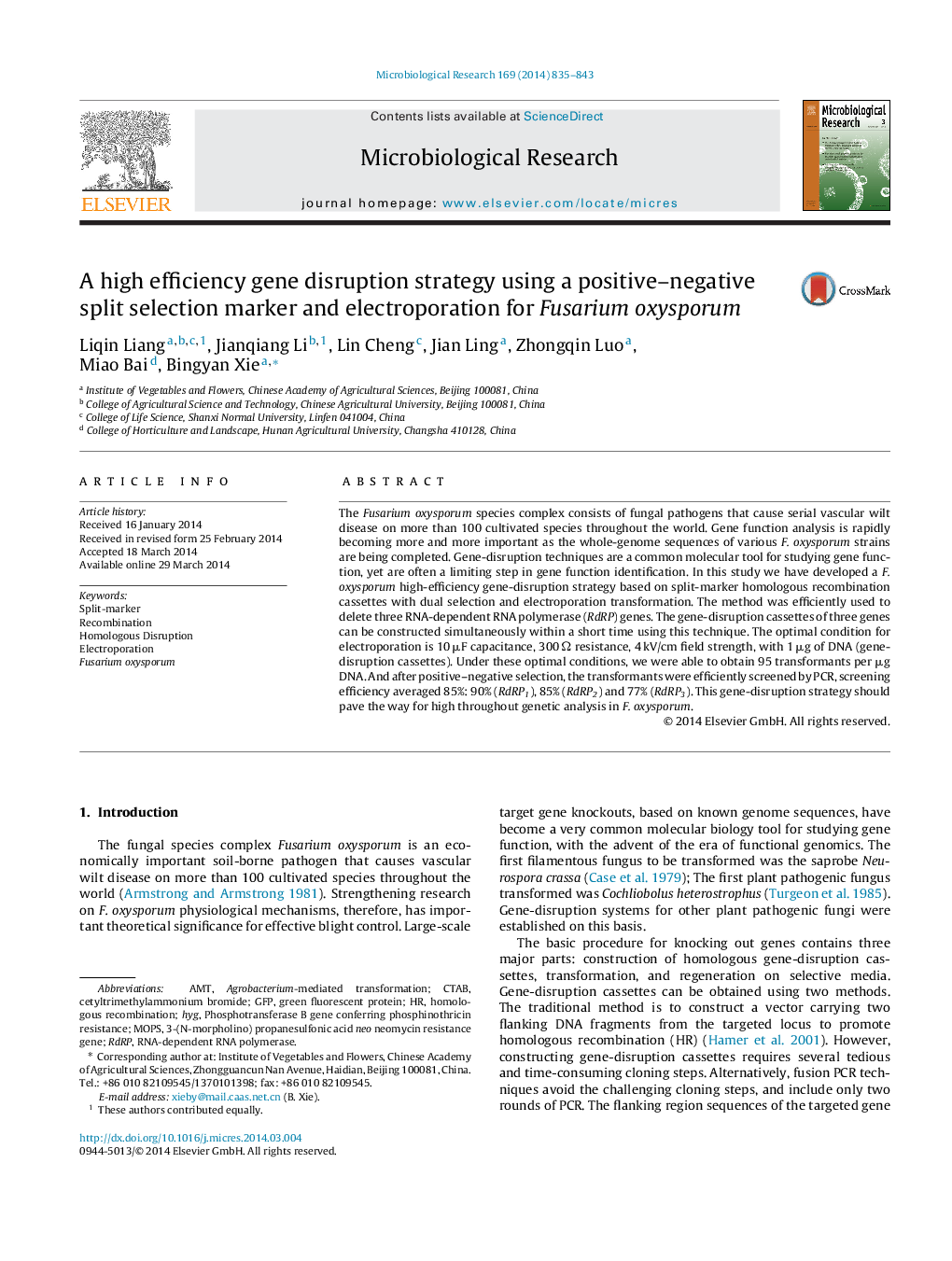| کد مقاله | کد نشریه | سال انتشار | مقاله انگلیسی | نسخه تمام متن |
|---|---|---|---|---|
| 2092325 | 1081782 | 2014 | 9 صفحه PDF | دانلود رایگان |

The Fusarium oxysporum species complex consists of fungal pathogens that cause serial vascular wilt disease on more than 100 cultivated species throughout the world. Gene function analysis is rapidly becoming more and more important as the whole-genome sequences of various F. oxysporum strains are being completed. Gene-disruption techniques are a common molecular tool for studying gene function, yet are often a limiting step in gene function identification. In this study we have developed a F. oxysporum high-efficiency gene-disruption strategy based on split-marker homologous recombination cassettes with dual selection and electroporation transformation. The method was efficiently used to delete three RNA-dependent RNA polymerase (RdRP) genes. The gene-disruption cassettes of three genes can be constructed simultaneously within a short time using this technique. The optimal condition for electroporation is 10 μF capacitance, 300 Ω resistance, 4 kV/cm field strength, with 1 μg of DNA (gene-disruption cassettes). Under these optimal conditions, we were able to obtain 95 transformants per μg DNA. And after positive–negative selection, the transformants were efficiently screened by PCR, screening efficiency averaged 85%: 90% (RdRP1), 85% (RdRP2) and 77% (RdRP3). This gene-disruption strategy should pave the way for high throughout genetic analysis in F. oxysporum.
Journal: Microbiological Research - Volume 169, Issue 11, November 2014, Pages 835–843